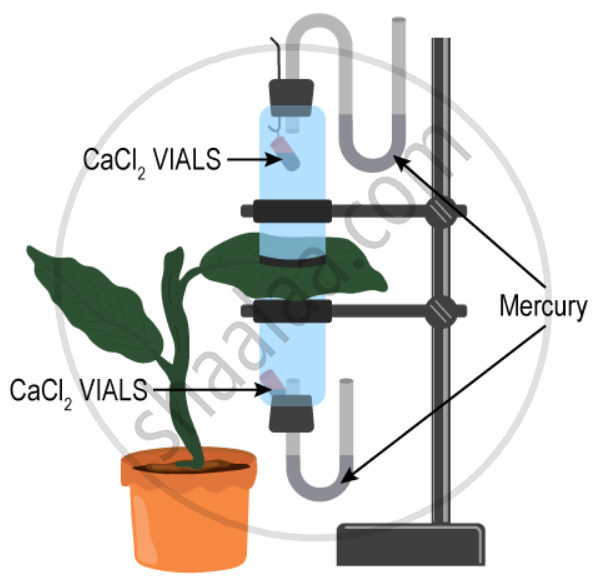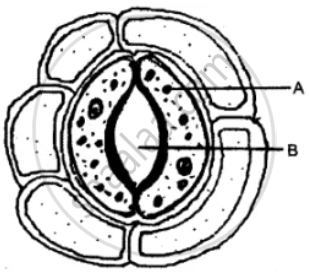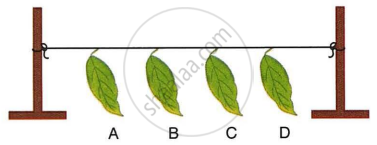Advertisements
Advertisements
प्रश्न
How will you differentiate the different types of transpiration?
उत्तर
There are three types of transpiration:
Stomatal transpiration: Loss of water from plants through stomata. It accounts for 90- 95% of the water transpired from leaves.
Cuticular transpiration: Loss of water in plants through the cuticle.
Lenticular transpiration: Loss of water from plants as vapour through the lenticels. The lenticels are tiny openings that protrude from the barks in woody stems and twigs as well as in other plant organs.
But transpiration is necessary for the following reasons.
- It creates a pull in leaf and stem.
- It creates an absorption force in roots.
- It is necessary for continuous supply of minerals.
- It regulates the temperature of the plant.
APPEARS IN
संबंधित प्रश्न
The apparatus shown in the following diagram is Garreau’s potometer designed to demonstrate unequal transpiration from the two surfaces of a dorsiventral leaf. Before keeping the leaf in between the cups, anhydrous calcium chloride (CaCl2) contained in two small vials were weighed and placed in both the cups. The ends of the cups were closed with corks through which two mercury manometers were connected. After few hours, CaCl2 vials were taken out and weighed again.

What is the purpose of using a manometer?
Differentiate Between Stomata and Hydathodes.
Differentiate Between Cobalt chloride paper and Goat’s bladder.
The diagram below represents a structure found in a leaf.

Study the same and answer the questions that follow:
(i) Name the pis labeled A and B.
(ii) What is the biological term for the above structure?
(iii) What is the function of the part labeled A?
(iv) Mention two structural features of A, which help in the function mentioned in (iii) above.
(v) Where is this structure likely to be found in a leaf?
(vi) The above structure helps in the process of transpiration. Explain the term transpiration.
(vii) How many other cells are found surrounding this structure as seen in the diagram?
Draw a neat diagram of the stomatal apparatus found in the epidermis of leaves and label the Stoma, Guard cells, Chloroplast, Epidermal Cells, cell wall and Nucleus.
Mark the most appropriate answer in the following:
Stomata open during day and close at night because:
Suppose you have a rose plant growing in a pot, how will you demonstrate transpiration in it?
Name the following:
The openings on the barks of trees through which transpiration occurs.
The given figure represents an experiment:

- Leaf A was coated with grease on both surfaces.
- Leaf B was coated with grease on the lower surface.
- Leaf C was coated with grease on the upper surface.
- Leaf D was left without any application of grease. All four leaves A, B, C and D were left in a room for about 24 hours.
- Which leaf dries first? Give reason.
- Which leaf dries last? Give reason.
